Curative Edible Organic Architecture Inspired by Question
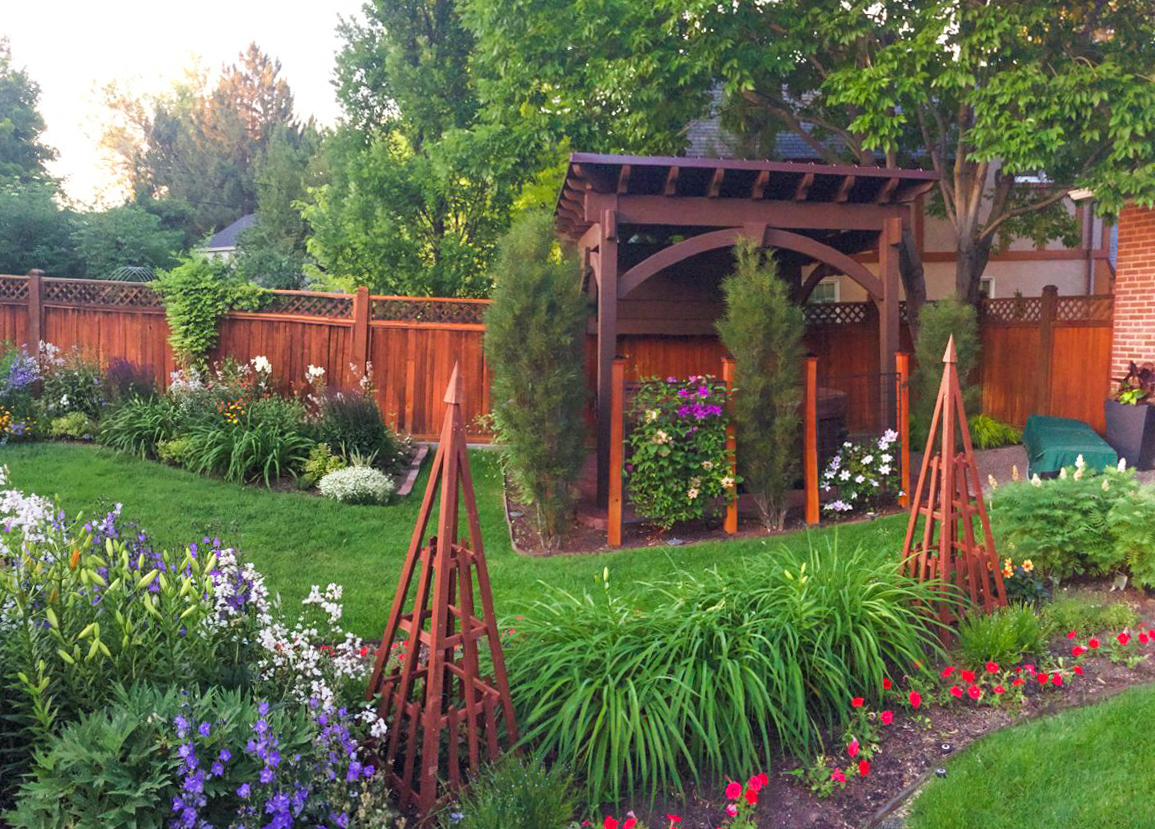
Au, a perfect breakfast, savoring a cup of coniferous coffee; an evening with friends sipping tree bud sweetened cocktails; the family together for dinner; the sweet smell of delicious bark bread topped with pine needles, alongside a dish of zesty lemony flavored marinated fish and a mouthwatering slice of pine pergola pie for dessert. Comicality? No. I am cheerfully serious.
Wisdom, the unfolding of ancient mysteries and exciting new discoveries are made, often through the asking of questions that in turn make changes in the world or the way we view the world around us.
A client had a question in regards to the Natural stain finish on their timber frame pergola kit. Western Timber Frame® happily welcomes questions and comments from Clients, DIY homeowners, and contractors. As for me, I look forward to questions because they inspire topics and give opportunities to talk about Western Timber Frame® technology, projects, products, and designs.

Our Client wondered why they could not see the Natural stain penetrated into the interior of the Douglas-fir timber.
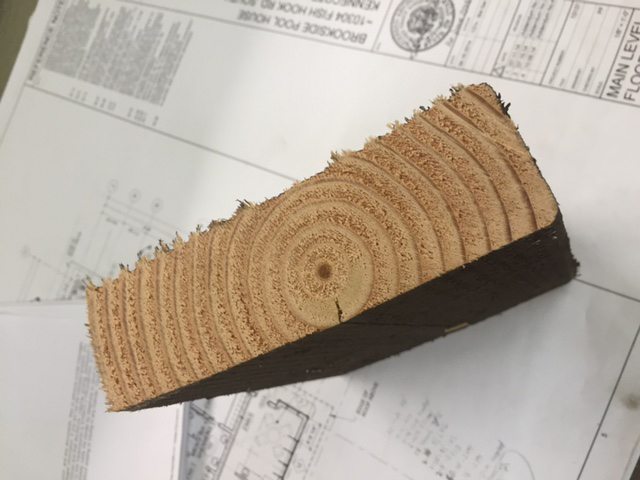
Thank you for the question.
Natural stain finish is clear, designed to show off the beauty of Au naturel timber. Design Manager, Mark Mackert took a scrap with a darker stain finish and cut it to visually demonstrate whereas the Natural stain finish could not be able to be seen.
Mark said, “As you can see in this picture there is clearly stain on the board and no penetration into the end grain.”
Although botanically Douglas-fir is classed as a softwood, Douglas-fir is technically a hardwood. Wonderfully, Douglas-fir does not soak moisture into the interior of the wood as a softer wood, like pine, for example, would. This is part of what makes Douglas-fir the preferred choice for quality outdoor structures that are exposed to heavy rainfalls and freezing mountainous snows.
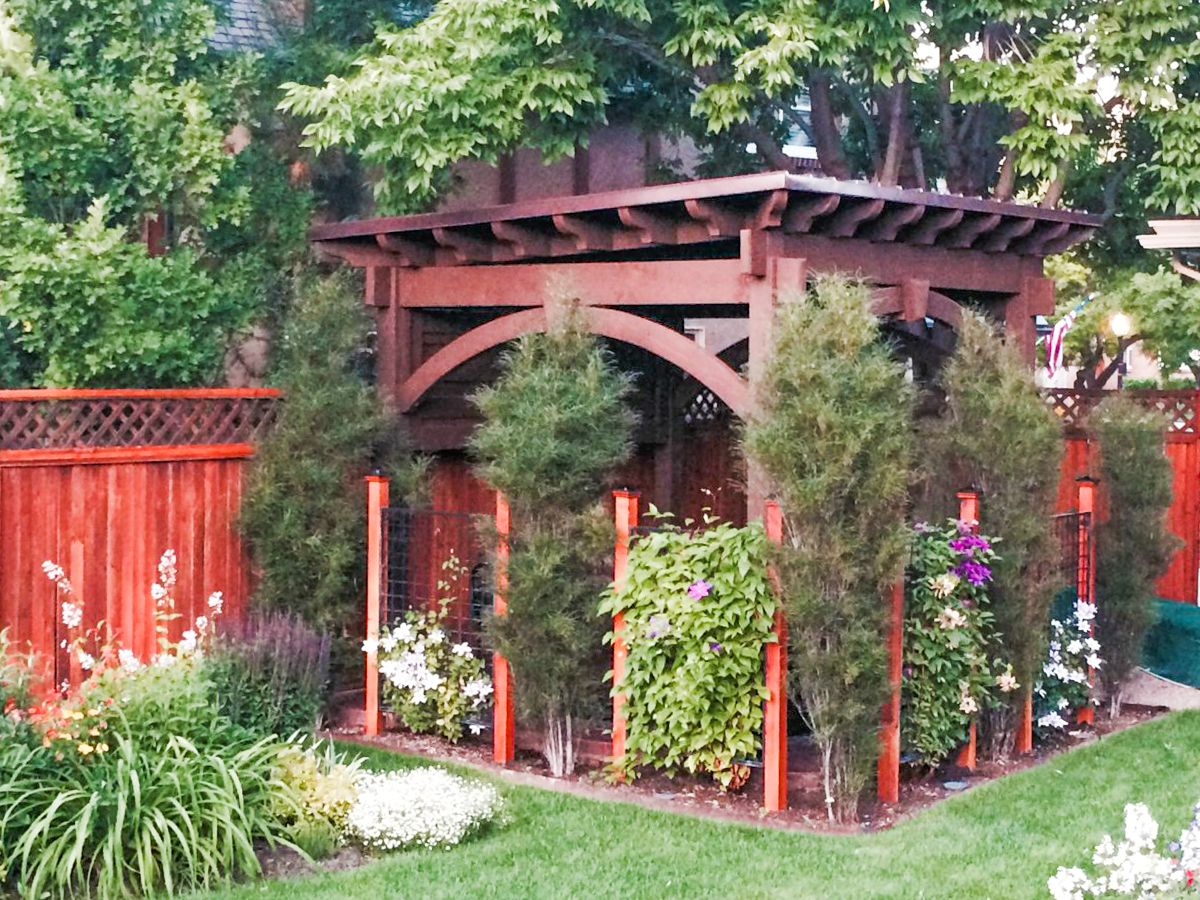
Douglas-fir is the preeminent timber for heavy structural purposes and when combined with Western Timber Frame’s uniquely superior construction method implementing The Dovetail Difference® plus Post-to-Beam® design gives these timber structures wind ratings of well over 120+ mph. Now, that is phenomenal!
Designing and building sound, organic architectural outdoor shade structures is the people at Western Timber Frame’s passion. Therefore, I am inclined to focus primarily on the architectural qualities endowed within a Douglas-fir tree, however, this beautiful coniferous green tree is so much more than just an incredible building material.
Genius Genus with Therapeutic & Curative Properties
The Douglas-fir (Pseudotsuga menziesii) tree has puzzled many botanists because of its similarity to other genera and has been labeled at times as a true fir, spruce, pine, or hemlock. The Latin name for the Douglas-fir is Pseudotsuga, meaning false hemlock. Douglas-firs are sometimes called a Red Fir, Douglas Spruce or Oregon Pine but they are neither a true fir, spruce nor a pine. In 1867, the Douglas-fir was given its own genus with six species, two of which are native to North America. The Douglas-fir is an evergreen tree, keeping its needles all year round and is a popularly used as a Christmas tree. The highest volume of Christmas tree sales in the United States isn’t even a true fir but is the Douglas-fir trees that can easily be trimmed to near cone-shaped perfection prior to being sold.
Many trees have bark, leaves, and fruit that are edible for part of the year, but the evergreen Douglas fir bears a boon of nutritious gifts that can be gathered even throughout the biting cold freezes of winter.

The Native American Indians and Native Canadians knew well the value of the Douglas-fir in its inherent medicinal qualities and introduced it to the Westward Pioneers. The therapeutic and curative properties of Douglas-fir helped with scurvy, stomach aches, and congestion, headaches, kidneys, bladder, rheumatism, eye-sight and mental acuity. Douglas-fir tea was added to the bath to ease muscle pain and relieve strained nerves or as a hair rinse to combat dandruff. The tea is an excellent cleansing beverage, stimulating the organs to rid themselves of toxins and was used by Native Americans in sweat lodges and purifying rituals.

Douglas-fir contains many beneficial anti-inflammatory oils such as anthocyanins, flavonoids, and quercetin used for respiratory conditions, colds, flu and sinus infections. Resin from Douglas-fir was collected for healing sore throats, coughs, cuts, burns, and wounds. The sap was chewed for gum and works well to remove sugars and whiten teeth. Chewing sticky buds healed mouth sores. Poultices were made to treat sprains, injured or dislocated bones. They also soaked fresh branches or twigs in oil or vinegar for infusions and administered it for paralysis and arthritic joints, sore aching muscles, kidneys, and bladder. Green bark was used in treating bleeding bowels and excessive menstruation. Softer shoots were placed inside of shoes to prevent athletes foot and sweaty feet.
Edible with a Bewitching Mysterious Fragrance
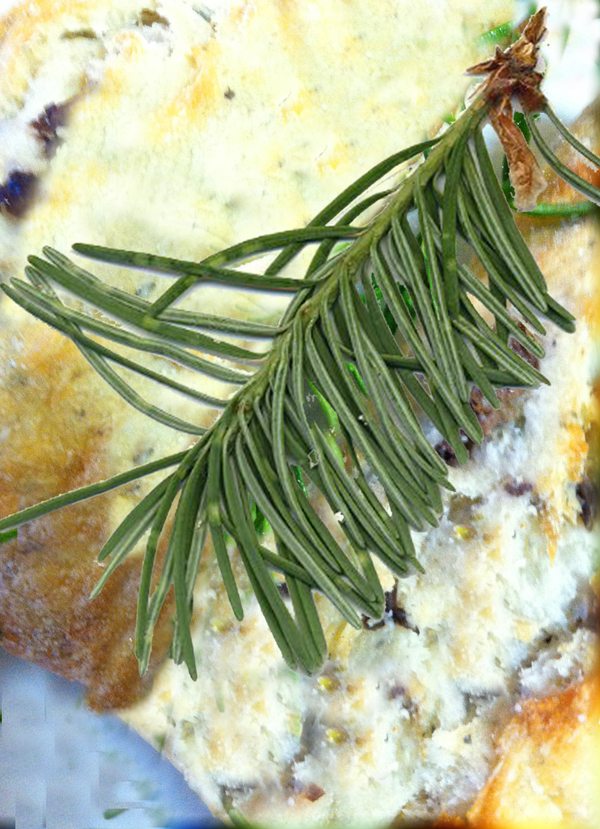
Sachets made from the tips of the needles literally let you hold the scent of the forest in your hand. Pull it out and breath in deep for stress relief. It will enliven your spirits with a more upbeat feeling.
The bewitching mysterious overall fragrance of Douglas-fir comes from well over twenty volatile oils that include Pinene, Citronellol, Limonene, and Sabinene. Recent studies state that the oils are useful in lowering blood pressure, lower cholesterol and controlling weight. The needle tips are exorbitantly rich in oils that are regularly ascertained in citrus trees. These citrus type oils explain why Douglas-fir has a lemon-like edge of the bark. The bark is also edible and is an excellent survival resource. It is also an entertainment resource adding a wonderful honey taste to most anything from a succulent roast to a cocktail. Marinades for fish, meats and other types of dishes are infused from whole pine needles for a fantastic flavor.
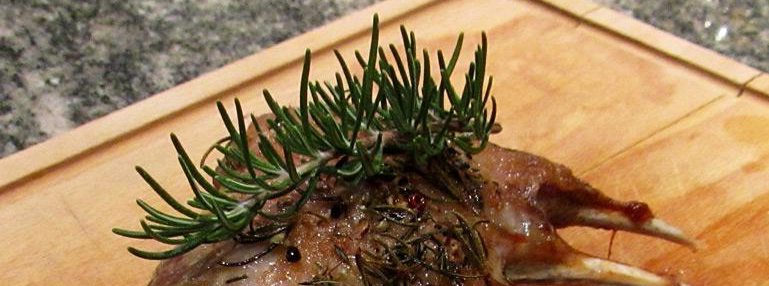
The Native American Indians dried and ground the inner bark into a flour for bread and cereals. They also harvested a “maple syrup” from the fresh clipped Douglas-fir needle tips.
The cambium layer (inner bark) is very sweet and delicious. Historically, it was ground into flour and also used as a base for bread and soups. No part of the Douglas-fir tree was wasted, even seeds were eaten for food. When harvesting it, it is best to take it from individual branches. This works well without harm to the tree. Taking the inner bark from the base of the tree can kill the tree.
When the tree is in bloom and the buds are full of pollen you can take a plastic baggie and place it around the buds and shake it vigorously. The pollen can be stored in a glass jar in a cool place. Add it as a sweetener for a delicious smoothie. Sugar crystals that form at the tips of needles and around branches are used as a sweetener as well.
In the early spring, the Douglas-fir produces new, light green needles at the end tips of its branches. These new needles have a light, lemony flavor and can be added to smoothies and salads for a zesty lemon taste.
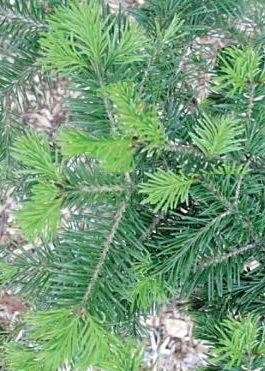
*The Douglas-fir is the State tree of Oregon.

Tea prepared from Douglas-fir needles is a delicious refreshment full of vitamins, with an extremely high content of fat-soluble Vitamin-A and antioxidant Vitamin-C. One cup of Douglas-fir Needle tea has more than five times the Vitamin-C that can be found in one lemon. Fresh younger needle leaves have a pleasing balsamic aroma that is used as a coffee substitute. The younger pine needles make the sweetest tea and give the mildest flavor and also make a refreshing antiseptic mouthwash. The needle tea is also used in flavoring bread, sauces, and soups.
The enticing scent of Douglas-fir Needle Tea is beguiling, but be aware that you do not drink Douglas-fir Needle Tea if you are pregnant, possibly pregnant, trying to become pregnant or breastfeeding. Also, take special care that the tree has not been sprayed with any herbicides or pesticides.

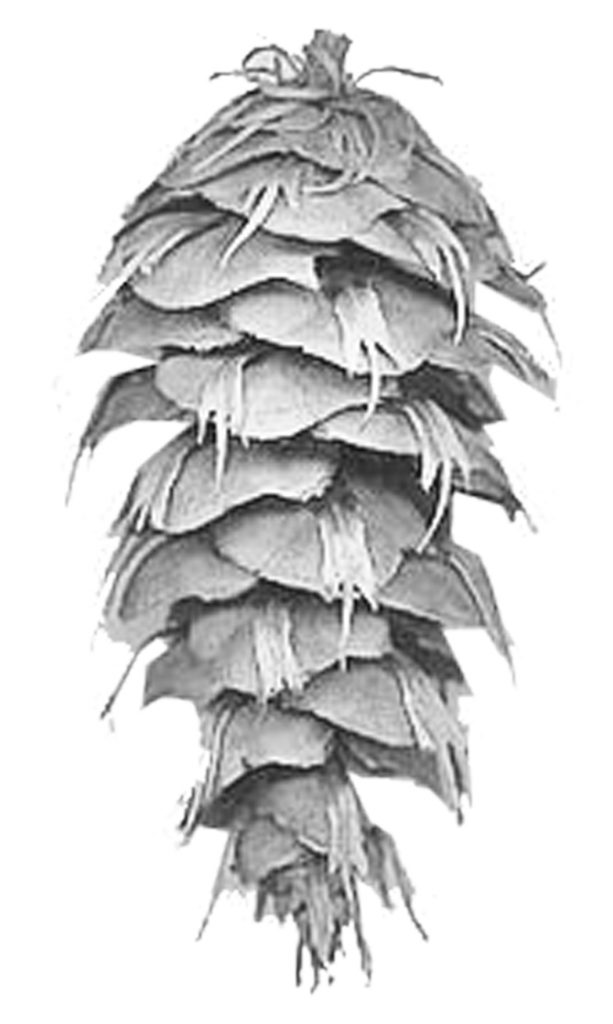
One more note of caution: Most conifers are safe to experiment with in making tea and people have been brewing tea from pines for centuries, however, there are three pines that should be avoided. Don’t pick poisonous pines. The pharmaceutical industry extracts from these for drug manufacturing at safer levels. Consuming large amounts of chemical compounds in their natural concentrated form can be hazardous without knowledge.
Douglas-fir, as noted previously, is not a pine. It is its own genus even though it has “pine needles” and pinecones and looks very similar to other conifers. The female Douglas-fir is very easy to identify by its cone. The cones have three long tail-like prongs or bracts that extend between the scales of the cones.
Nature Packaged DIY Organic Products
The antiseptic resin from the Douglas-fir has a variety of uses. The sap can be chewed like gum. If you collect the resin, scraping it from the tree into a tin container, pressing the sap down until the container is full it can be used for a candle to provide light at night. As an added bonus the odor from the resin candle will also stave off insects. If you cannot get enough resin, take a knife and cut into the bark, leave and come back later and the sap will have seeped from the cut. The hot resin can also be used as a glue and can waterproof items like tent seams, gloves, and boots. Add some ash dust from the fire and it can strengthen the resins waterproofing qualities. The resin is a caulk that can be used on boats.

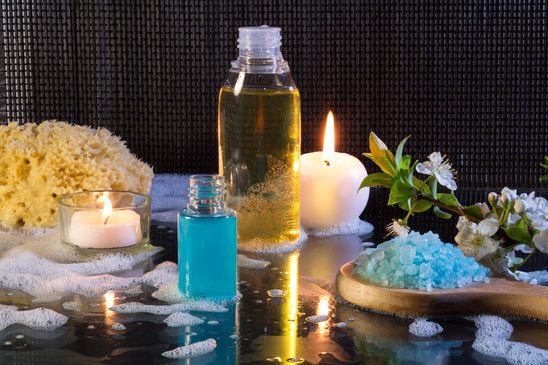
The bark has always been and is a favored part of the Douglas-fir tree especially as a fuel, Douglas-fir tree bark burns almost smoke-free at very high heat. Tannins for ink, dye and leather productions are made from the bark. Canoes were anciently made from Douglas-fir bark. Corded roots are used in making fishing nets, stitching canoes and weaving baskets. The beautiful baskets produced from the roots of the Douglas-fir have natural insecticidal properties.
The needles to have been used in mattresses to deter lice and bed bugs. I could go on and on about all the different adhesives and endless products that are produced from Douglas-fir, but for that, I would have to write a book.
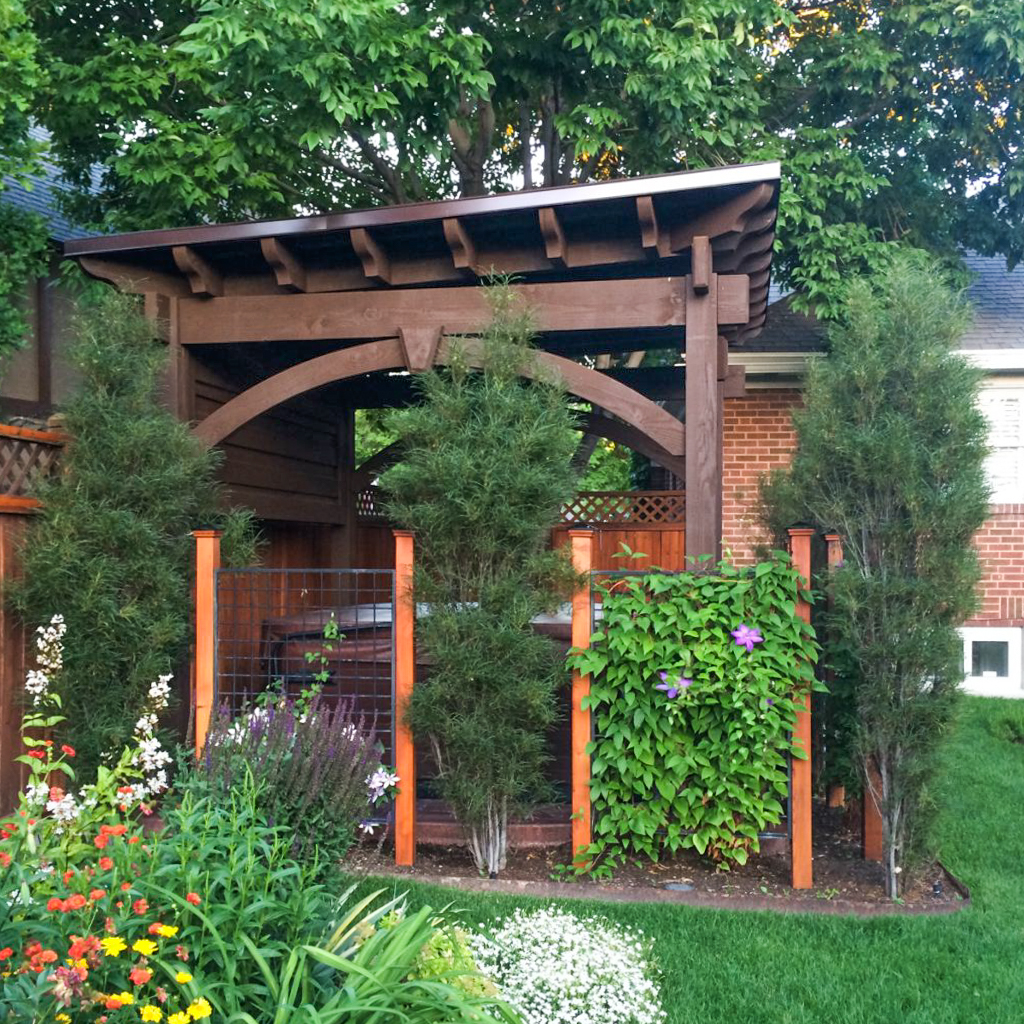
#DIYPavilionKit
Responsible Organic Architecture
If you look at a Douglas Fir growing in the Pacific Northwest, the tree may look like a towering limb-free trunk. Douglas-fir is intolerant to shade and will self-prune its lower limbs which gives the tree fewer knots with stretches of long, consistently straight fibers. It is the fibers that give the highest modulus of elasticity and strength-to-weight ratio, the strongest and most durable of any softwood in North America; handling heavy loads without bending or buckling.
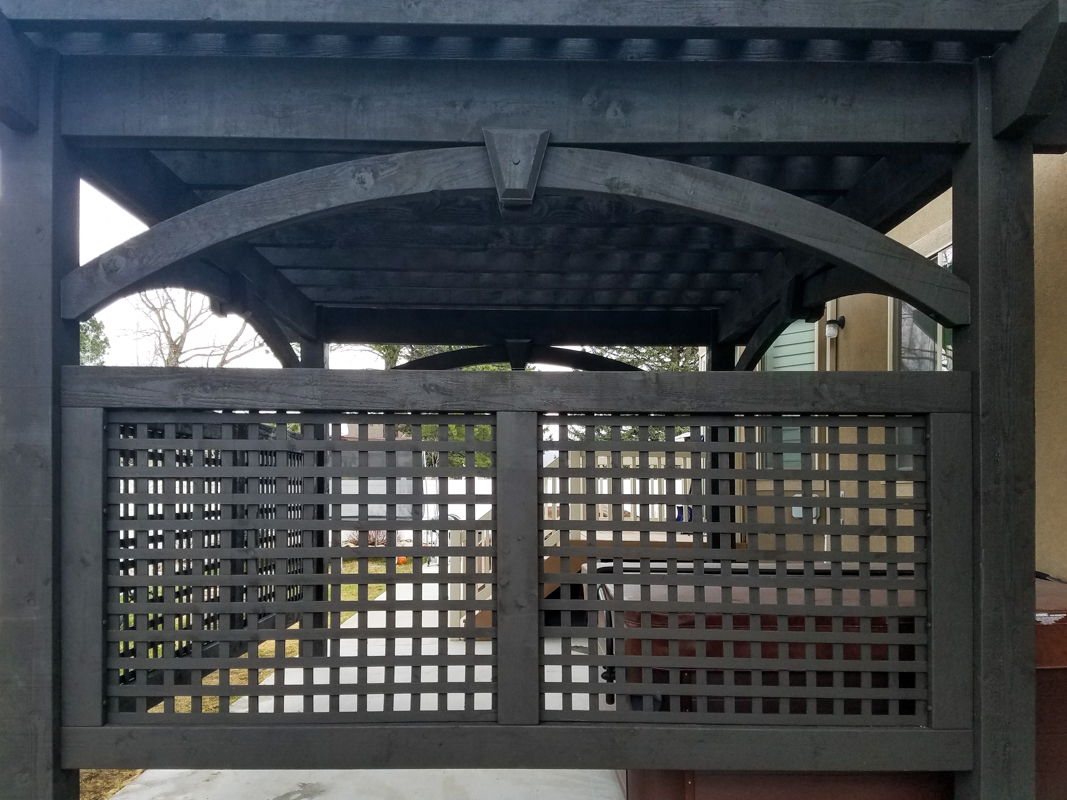
Douglas fir yields more timber than any other tree species in North America. The strength and durability of Douglas fir have made it the choice for building and is commonly used in making timber, flooring, aircraft, boats, and furniture, as well as plywood, dimensional lumber, railroad ties, log homes, fencing, posts, beams, landscaping, pulp, and pilings. Treated pilings are often used in decking and marine structures. Pine straw is applied for decorative purposes and landscaping. Pine straw is a great landscaping mulch adding a slight acidity to the soil for acid-loving plants such as fuchsias, ferns, and gardenias. It is also well known for its dimensional stability, meaning that as it expands and contracts as all woods do, it holds its shape better than other wood types. High load resistance is crucial in homebuilt aircraft and boats. Douglas Fir is rot-resistant which is important wherein it is exposed to the elements. If you are up in the sky or on the sea, it had better be good wood.
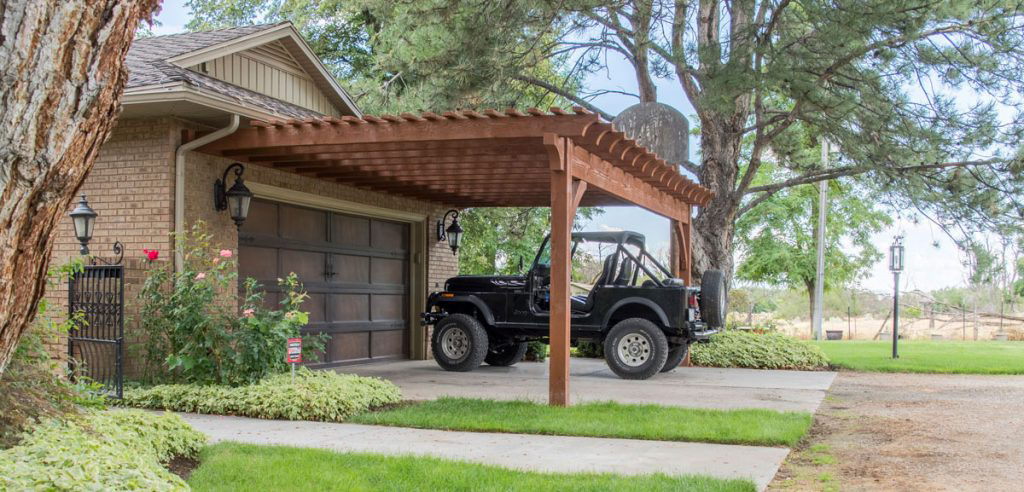
#DIYCarportCoverKit
At Western Timber Frame®, Douglas-fir is the primary timber used in the manufacturing of timber frame arbors, gazebos, pergolas and pavilions at Western Timber Frame®. Western Timber Frame® sources renewable timber directly from the mills in the United States that have sustainable and renewable timber growth policies and only #1 Appearance Grade A Douglas Fir, personally visiting these sites to ensure the highest environmental standards are in place and that these mills use responsible harvesting and forest management.
Western Timber Frame® is focused on giving quality service with a superior customer buying experience. Organic architecture beautified in outdoor shade structures is our specialty and we gladly receive questions and comments even if the subject is not within the realm of our expertise, if we don’t know the answer, we’re not afraid to tell you so. As you can see, one simple question about the stain on Douglas-fir set me to writing about the amazing properties of the Douglas-fir tree, a topic that intrigues me.
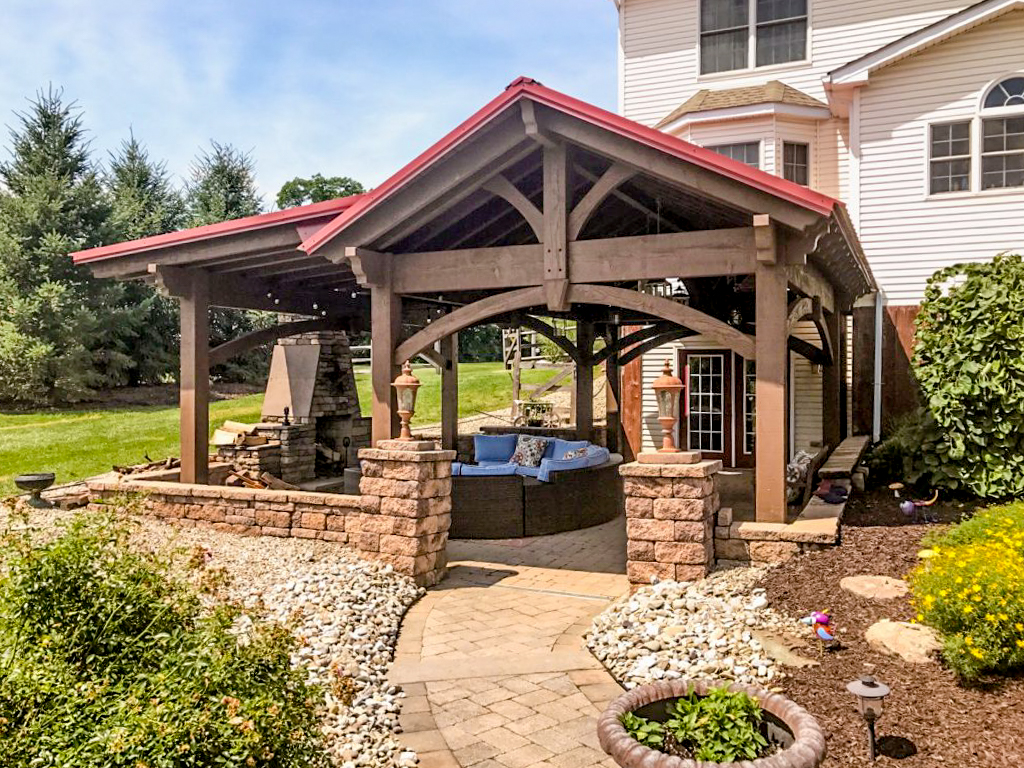
#DIYPavilionKit
Comments and questions can open up the alchemy of the mind, inspire ideas and add some spice to life. I hope the results of the above Clients’ question may have inspired you to take a closer look at nature or simply remind yourself to fill your lungs with the fresh vitality that Mother Nature offers to you in her great outdoors.
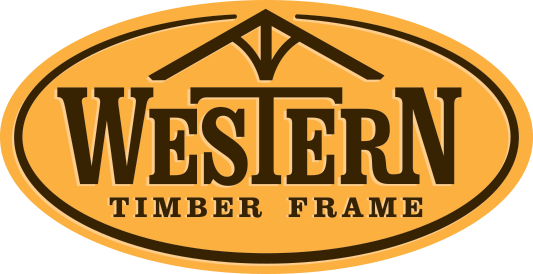


Leave a Comment